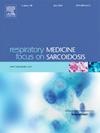预测肺移植受者住院死亡率的Nomogram模型:一项回顾性队列研究
IF 3.1
3区 医学
Q2 CARDIAC & CARDIOVASCULAR SYSTEMS
引用次数: 0
摘要
目的肺移植是晚期肺部疾病的重要治疗手段。然而,住院死亡率仍然是一个重大挑战。识别围手术期危险因素对改善预后至关重要。本研究旨在建立肺移植受者住院死亡率的预测图。方法回顾性分析2015-2024年无锡市人民医院1355例LTx患者的临床资料。最小绝对收缩和选择算子(LASSO)回归确定了院内死亡率的预测因子。采用标定曲线、决策曲线分析和受试者工作特征(ROC)曲线构建了nomogram并对其进行了验证。总体住院死亡率为14.5%,死亡发生在手术后20天内。独立预测因素包括年龄、ICU住院时间、冷缺血时间、输血、c反应蛋白、血清钠、原发性移植物功能障碍、肾脏替代治疗和体外膜氧合支持。与SOFA评分(AUROC: 0.772, 95% CI 0.732-0.812)和APACHE II评分(AUROC: 0.718, 95% CI 0.673-0.764)相比,nomogram预测准确率(AUROC: 0.874, 95% CI 0.843-0.905)更高。校准和决策曲线分析证实了其准确性和临床实用性。结论本研究强调了LTx受者住院死亡率的关键围手术期危险因素。开发的nomogram为预测早期死亡率提供了可靠的工具,帮助临床医生优化患者管理。本文章由计算机程序翻译,如有差异,请以英文原文为准。

Nomogram model to predict in-hospital mortality in lung transplant recipients: A retrospective cohort study
Purpose
Lung transplantation (LTx) is a vital treatment for advanced lung disease. However, in-hospital mortality remains a significant challenge. Identifying perioperative risk factors is crucial for improving outcomes. This study aimed to develop a predictive nomogram for in-hospital mortality in lung transplant recipients.
Methods
We retrospectively analyzed 1355 LTx recipients at Wuxi People's Hospital (2015–2024). Least absolute shrinkage and selection operator (LASSO) regression identified predictors of in-hospital mortality. A nomogram was constructed and validated using calibration curves, decision curve analysis, and receiver operating characteristic (ROC) curves.
Findings
The overall in-hospital mortality rate was 14.5 %, with deaths occurring within 20 days post-surgery. Independent predictors included age, ICU stay duration, cold ischemia time, blood transfusion, C-reactive protein, serum sodium, primary graft dysfunction, renal replacement therapy, and extracorporeal membrane oxygenation support. The nomogram showed superior predictive accuracy (AUROC: 0.874, 95 % CI 0.843–0.905) compared to SOFA (AUROC: 0.772, 95 % CI 0.732–0.812) and APACHE II scores (AUROC: 0.718, 95 % CI 0.673–0.764). Calibration and decision curve analyses confirmed its accuracy and clinical utility.
Conclusions
This study highlights key perioperative risk factors for in-hospital mortality in LTx recipients. The developed nomogram provides a reliable tool for predicting early mortality, aiding clinicians in optimizing patient management.
求助全文
通过发布文献求助,成功后即可免费获取论文全文。
去求助
来源期刊

Respiratory medicine
医学-呼吸系统
CiteScore
7.50
自引率
0.00%
发文量
199
审稿时长
38 days
期刊介绍:
Respiratory Medicine is an internationally-renowned journal devoted to the rapid publication of clinically-relevant respiratory medicine research. It combines cutting-edge original research with state-of-the-art reviews dealing with all aspects of respiratory diseases and therapeutic interventions. Topics include adult and paediatric medicine, epidemiology, immunology and cell biology, physiology, occupational disorders, and the role of allergens and pollutants.
Respiratory Medicine is increasingly the journal of choice for publication of phased trial work, commenting on effectiveness, dosage and methods of action.
 求助内容:
求助内容: 应助结果提醒方式:
应助结果提醒方式:


